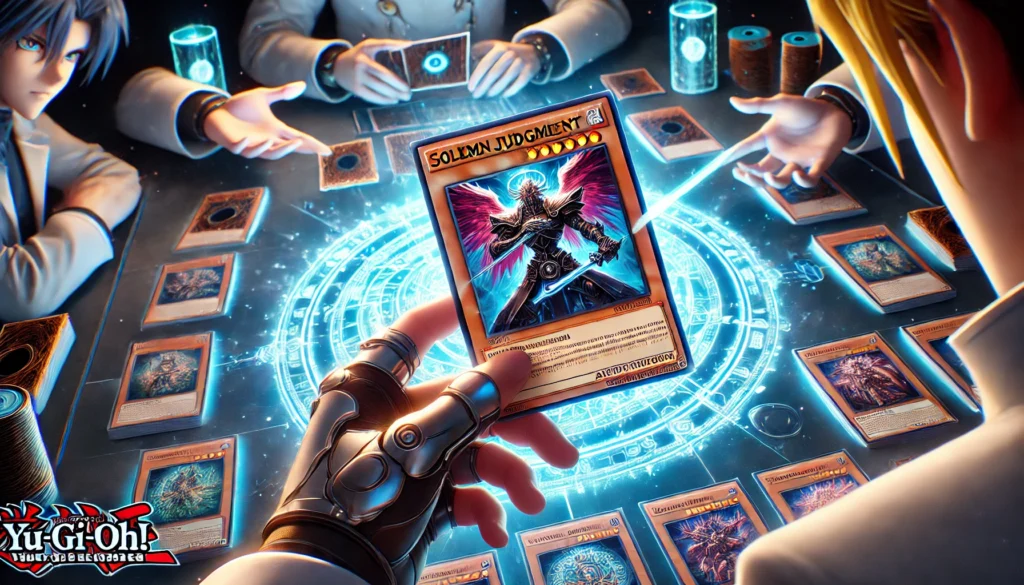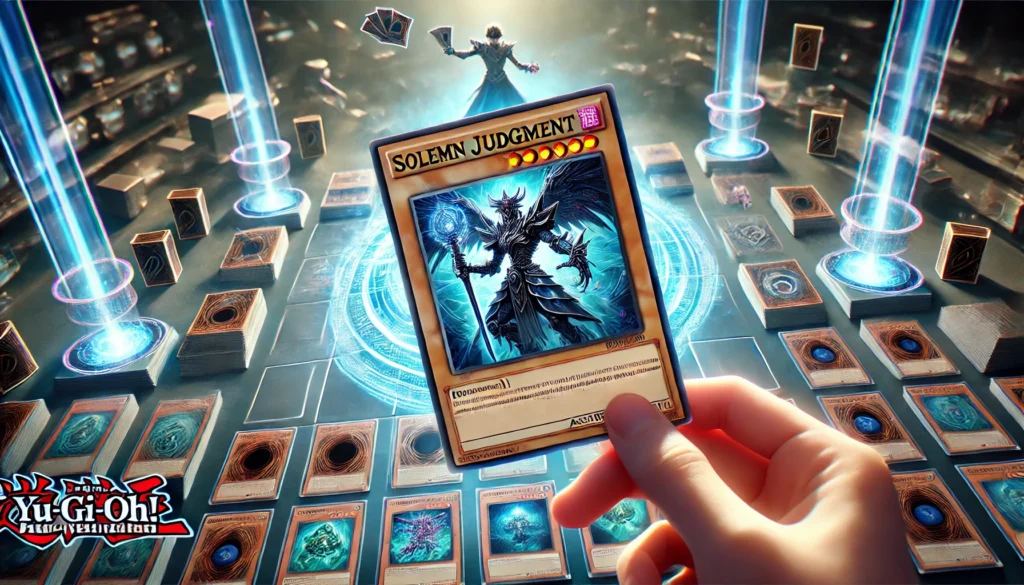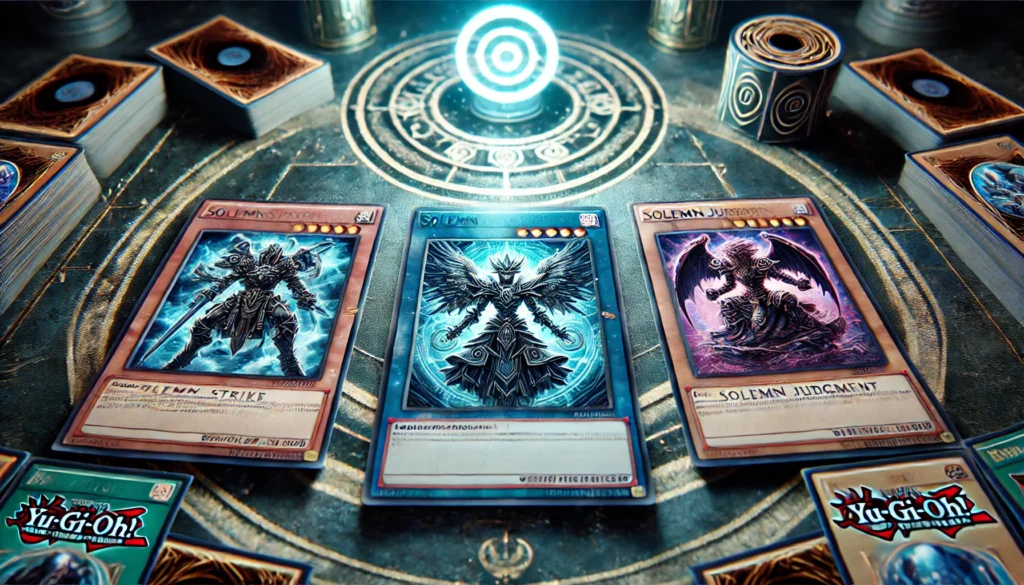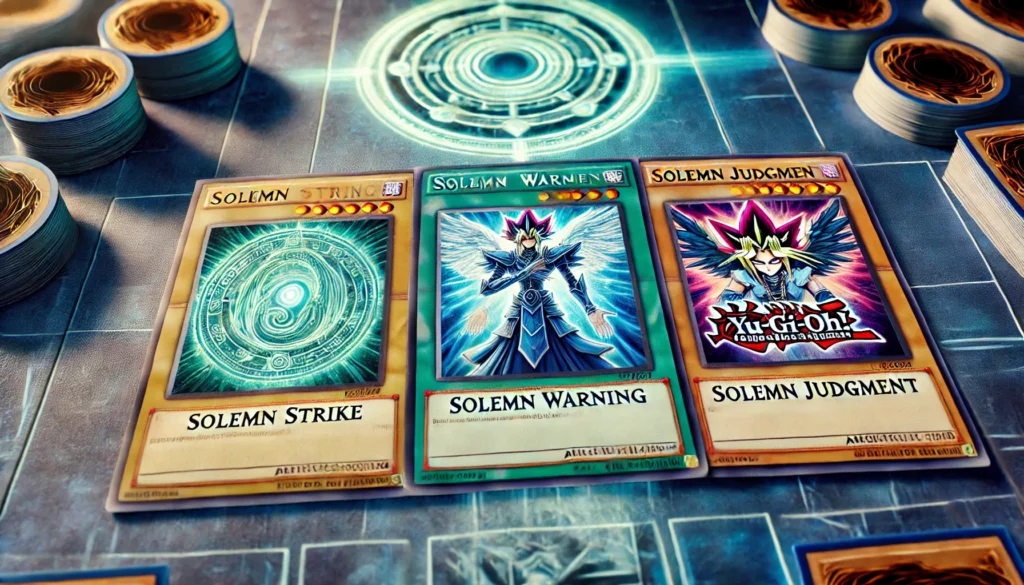Are the Solemn Cards Bad in 2034? A Comprehensive Guide

Solemn cards have been a cornerstone of Yu-Gi-Oh! gameplay since their inception. Known for their ability to negate key actions like summons and activations, cards like Solemn Judgment and Solemn Strike have influenced countless duels. But with the ever-evolving game mechanics and shifting meta, many players ask: “Are the Solemn cards bad in 2034?” This article provides an in-depth exploration of these iconic cards, their historical impact, current relevance, and potential future in competitive play.
Historical Significance of Solemn Cards
Introduced early in Yu-Gi-Oh!’s history, Solemn cards quickly became staples in competitive play. Solemn Judgment, for instance, offered unparalleled versatility by negating almost any action for half the player’s Life Points. Over time, other cards like Solemn Warning and Solemn Strike expanded the archetype, each catering to specific situations.
These cards played pivotal roles in various tournament-winning decks, cementing their reputation as essential tools for control and disruption strategies. Whether in the hands of casual duelists or professional players, Solemn cards have shaped gameplay for decades.
Detailed Analysis of Solemn Cards
Solemn Judgment
Solemn Judgment is the most versatile of the series. Its ability to negate any spell, trap, or summon makes it invaluable, especially in high-stakes matches. However, its cost—half of the player’s Life Points—can be risky in fast-paced formats.
Solemn Warning
This card is tailored for negating summon effects. While its fixed cost of 2000 Life Points makes it more predictable, the rise of powerful low-cost negation alternatives has somewhat diminished its usage.
Solemn Strike
Favored in the modern era, Solemn Strike offers excellent value by negating special summons or monster effects for just 1500 Life Points. Its role in countering meta-defining strategies has kept it relevant in 2034.
Solemn Scolding
This niche card requires careful deck-building, as it can only be activated if it is the sole set card. Despite its powerful effect, this limitation has relegated it to specific strategies.
Solemn Wishes and Solemn Authority
While not negation cards, these entries in the Solemn series provide unique effects. However, they lack the competitive impact of their counterparts.
Evolution of Yu-Gi-Oh! Gameplay Mechanics
Over the decades, Yu-Gi-Oh! has transformed dramatically. The introduction of synchro, XYZ, pendulum, and link summoning has increased the game’s pace, often making trap-heavy strategies less effective. As such, Solemn cards must compete with faster, more efficient options to remain viable.
Current Meta Analysis in 2034
In 2034, the meta is dominated by archetypes that emphasize speed and resource efficiency. Trap cards, including Solemn cards, must overcome challenges posed by monsters and spells with built-in protections. Despite this, Solemn cards still find utility in decks that prioritize control, particularly in anti-meta strategies.
Usage Statistics (2034)
| Card Name | Usage Rate in Top Decks | Win Rate Contribution |
|---|---|---|
| Solemn Judgment | 45% | High |
| Solemn Strike | 60% | Very High |
| Solemn Warning | 25% | Moderate |
Advantages of Solemn Cards in 2034
- Versatility: Few cards can counter as many scenarios as Solemn Judgment.
- Cost-Effective Negation: Cards like Solemn Strike offer high utility for a manageable cost.
- Meta Adaptability: These cards remain effective in disrupting key plays in both aggressive and control-oriented strategies.
Disadvantages and Limitations
- Life Point Costs: With the game’s increased pace, paying Life Points can leave players vulnerable.
- Power Creep: Newer cards often replicate Solemn effects at lower costs or with added benefits.
- Speed Discrepancy: As traps, Solemn cards inherently lag behind the game’s reliance on quick-activation spells and monsters.
Future Prospects of Solemn Cards
As the game continues to evolve, the Solemn cards’ future hinges on their ability to adapt. Potential reprints or errata may enhance their relevance, while new archetypes might synergize with their effects. Regardless, their legacy as iconic negation tools ensures they will remain part of the game’s history.
FAQs About Solemn Cards
- Are Solemn cards still relevant in casual play?
Yes, they remain popular among casual players due to their straightforward effects and accessibility. - Do Solemn cards work well in modern archetypes?
They are best in control-oriented decks but can be less effective in hyper-aggressive strategies. - Are there budget-friendly alternatives to Solemn cards?
Yes, cards like Dark Bribe and Paleozoic Dinomischus offer similar negation effects at lower costs. - Can Solemn cards counter link summons effectively?
Absolutely, especially Solemn Strike, which excels against special summons. - Will Solemn cards ever be banned again?
While unlikely, their status depends on future metas and player feedback.
Conclusion
So, “are the Solemn cards bad in 2034?” The answer is far from simple. While they face challenges from power creep and evolving gameplay mechanics, their versatility and historical significance ensure they remain valuable tools in many scenarios. For players seeking reliable negation and control options, Solemn cards continue to offer strategic advantages. Whether you’re a seasoned duelist or a newcomer, these iconic cards deserve consideration in your deck-building journey.
Additional FAQs for Are the Solemn Cards Bad in 2034?
1. How can I optimize the use of Solemn cards in my deck?
To get the most out of Solemn cards, incorporate them into a deck that values control and disruption. They work best in decks that focus on negating key actions, such as summons or monster effects, and maintaining board presence. Consider pairing them with cards that help mitigate Life Point costs, such as Torrential Tribute or Skill Drain, to offset their potential drawbacks.
2. Are Solemn cards still worth running in 2024’s fast-paced decks?
While faster decks like those based on Link Summons or Pendulum Summoning may not prioritize traps, Solemn cards remain highly effective in slowing down high-speed strategies. Decks that value consistency, such as Sky Striker or Altergeist, continue to use Solemn cards to disrupt opponents’ key plays, making them viable in the current meta as well.
3. What is the best Solemn card to use in 2034?
The best Solemn card depends on your deck strategy. Solemn Judgment is a great choice for general negation, while Solemn Strike is particularly powerful in dealing with special summons and monster effects. Solemn Warning is still a solid option for decks that rely on shutting down summon-heavy strategies. For most players in 2034, Solemn Strike offers the best balance of utility and cost-effectiveness.
4. How have Solemn cards changed in terms of power since their release?
Since their release, the effectiveness of Solemn cards has been challenged by the introduction of quicker and more efficient negation cards. Cards like Infinite Impermanence and Effect Veiler provide monster negation at a lower cost, while newer trap cards offer quicker activation speeds. Despite this, the versatility of Solemn cards, particularly Solemn Strike, still holds significant value in today’s meta.
5. Can Solemn cards be used effectively in themed decks?
Yes, Solemn cards can be used in a variety of themed decks, especially those that require strong counterplay to dominant strategies. Decks like True Draco, which thrive on controlling the flow of the game, benefit from the disruption that Solemn cards provide. While not all themed decks will incorporate Solemn cards, control and anti-meta decks are more likely to find them useful.
Recommended Articles:
The Rise of IPTV Services: Revolutionizing Entertainment
Hardcore Leveling Warrior Chapter 329: Detailed Summary, Analysis & Insights
Jenna Aze: A Comprehensive Guide to Her Life and Legacy
Guide to BestAutoXperts.com: Your Trusted Automotive Partner
Are the Solemn Cards Bad in 2034? A Comprehensive Guide









